For years, North London had been plagued with a series of apparently inexplicable events and sightings, in and around the confines of Highgate Cemetery, culminating one Friday morning in February of 1970, when the Hampstead and Highgate Express ran a headline calibrated to chill the blood of residents across suburban north London: “Does a Vampyre Walk in Highgate?”. In the late 1960s and early 1970s, a series of bizarre events occurred in and around Highgate. In 1967, two adolescent girls walking home along nearby Swain’s Lane claimed to have witnessed the dead rising from their graves by the cemetery’s north gate. Another teenager had been awoken one night with “something cold and clinging” on her hand, which left prominent marks the next morning, while reports circulated of a “tall man in a hat” walking in the area, before melting through the cemetery’s walls. Then, more chillingly, in the 1970s, several animals were found dead and drained of blood near Highgate Cemetery. A number of ‘sightings’ of phantoms and spectres – particularly of a tall, dark-cloaked entity with burning eyes – led to speculation the capital had acquired its very own vampire. Reports soon came from Highgate of tombs being broken into. Graves and bodies were desecrated and black magic rituals allegedly performed. Vampire hunters claimed to have broken open coffins, and plunged stakes into – and even burnt – the corpses of the ‘undead’. Newspapers obsessed over these strange occurrences. TV programmes were made about a supposed nest of vampires in Highgate Cemetery and those promising to root out this ancient evil were interviewed. In the years that followed, two men went to war over the narrative.
It’s been dubbed the creepiest cemetery in London, but it was the ‘it place’ for the resting souls of wealthy Londoners in the 19th century. For much of the 20th century, however, Highgate Cemetery was a far more ramshackle place than it is now. Once one of London’s most fashionable burial grounds, the graveyard was by the 1960s overgrown and neglected. Graffiti was scrawled across headstones; vandals had pulled doors off vaults; cracks and holes in tombs offered glimpses of coffins and – in some cases – bodies. It’s not surprising that the dilapidated grandeur of this cemetery – with its ivy-entwined gothic monuments – would generate legends of hauntings and sinister creatures, and draw those with an interest in the occult and macabre. The graveyard is an impressive landscape of intricate tombstones, gothic busts battling unruly ivy, and an A-list guestbook of permanent residents including German philosopher Karl Marx and novelist George Eliot. By the end of the Second World War, the cemetery was in need of some serious TLC. It was run-down, making it a perfect filming location for horror movies such as From Beyond the Grave and Taste the Blood of Dracula in the early 70s. But residents were by then experiencing a horror story of their own. Sightings of a sinister, dark figure with blood-red eyes who appeared to glide above the grounds started cropping up in local newspapers. There was no other plausible explanation – it must be a vampire.
One of the sightings was recounted in a letter written by young Wicca (Pagan witchcraft) enthusiast David Farrant and published in the Hamstead and Highgate Express. Farrant claimed he had seen a tall, grey figure floating in the cemetery on Christmas Eve in 1969, and that he had since found foxes in the ground with their throats slit. As president of the Psychic and Occult Society, it is no surprise that he jumped to paranormal conclusions. Shortly after Farrant’s letter was published, a second man, Sean Manchester, was interviewed by the same newspaper for an article titled ‘Does a Vampyre Walk in Highgate?’. Mr Manchester claimed that the figure was in fact a ‘King Vampire’, a medieval black magician who had practiced magic in Wallachia, the home of Dracula, before being buried in the cemetery. His body, Mr Manchester claimed, had been resurrected by a modern satanist and his demonic form now stalked the graveyard at night. Mr Manchester, president of the ‘British Occult Society’, self-professed exorcist and vampire-slayer, and alleged Bishop of some unknown church, declared that he would be the one to rid the cemetery of the vampire. Farrant hit back, saying that the vampire myth had been blown out of proportion with the unhelpful influence of the media , and that the figure was in fact nothing more than your common garden ghost. In 1970 Manchester published The Highgate Vampire. Farrant came back with his publication of Beyond The Highgate Vampire. Proving that hell hath no fury like a magician scorned, the two developed a feud that continued for decades, and their antics around the Highgate vampire hysteria attracted the attention of the national press.
Stories about the Highgate vampire got so out of control that on Friday March 13, 1970, an ITV special report about the cemetery prompted an angry mob to descend on Highgate, determined to rid their town of the vampire tormenting local residents. Within hours of broadcast, dozens of “hunters” equipped with homemade stakes, coming from all corners of London, descended on the cemetery, bursting past the hastily assembled police cordon. In August of the same year, a woman’s century-old remains were discovered desecrated near her former resting place. A few weeks later, Farrant found himself arrested in a nearby churchyard carrying a crucifix and a wooden stake – and later sued the News of the World for their intimation that he was a would-be cat killer. The story officially ended in 1973, when Manchester claimed to have driven a stake through the vampire’s heart in the nearby “House of Dracula” in Crouch End. The apparent supernatural forces might have been defeated, but the real fear and loathing at the centre of the Highgate Vampire story had barely even begun. Over the following 50 years, public interest and amusement in the story has ebbed and flowed, but one thing has remained constant: the levels of animosity between the two men who claimed to own the narrative around the Highgate Vampire. For decades, the feud between David Farrant and Sean Manchester took a succession of twists and turns, through a steady stream of petty – and often surreal – vindictiveness, until Farrant’s death in April of 2019.
To try to make sense of the tale requires making sense of the area and time in which it took place. Highgate is just one of London’s many synthetic villages, but its history is unusually stuffed with the strange and macabre, including the spectre of the “ghostly chicken” – a story from the 17th century involving Sir Francis Bacon and the ghost of a chicken buried in the snow near Pond Square. Today, there’s an unmistakable stuffy affluence to the area – a coalition of money, both old and new – but the Highgate of 1970 was different, just as the Highgate Cemetery of the era was not the genteel tourist destination it is today. In place of the carefully manicured graves and pathways, there was a deep set neglect, characterised by rampant vandalism and mutterings about pagan sex parties taking place in the dark of night. It feels like the story could only have caught fire when it did in the early 1970s. The entire period seems to be caught up with the folk horror revival. The key date here is 1973, the ‘Year Zero’ of folk horror, in which The Wicker Man was released. This also happened to be the year in which the feud between Farrant and Manchester was at its height, culminating in a magical duel that was supposed to take place on Parliament Hill, but never materialised. This was also the decade of the Enfield Poltergeist, another cornerstone of the city’s recent paranormal folk history. Considering the weight of the era’s neuroses, it’s also hardly surprising that Stephen King chose suburban north London as the shapeshifting mouth of hell in his 1980 short story, Crouch End.
As colourful and dramatic as the accounts of Farrant and Manchester are, there are those of a sceptical turn-of-mind who feel tempted to question the Highgate Vampire narrative. Are there any explanations – social, cultural or psychological – that could account for the hysteria and bizarre events afflicting North London in the 1960s and 1970s? The Highgate Vampire was a strange case, but attempts have been made to rationally understand the phenomenon. ‘Legend tripping’, is a term used by folklorists and anthropologists to describe a common pattern of behaviour in which groups of young people make expeditions to sites associated with horrific, tragic or supernatural events. These visits, which normally take place at night, can be seen as ‘rites of passage’ which enable the youngsters to demonstrate their courage and daring. The sites of such ‘legend trips’ can include caves, tunnels, abandoned buildings and, especially, cemeteries. A related phenomenon is ‘ostentation’, which refers to the literal acting out of well-known legends and lore. Such ‘acting out’ can become a kind of game in which the borders of fantasy and reality get blurred. It’s also worth pointing out that popular culture at that time was awash with vampire images, which may also have inspired legend-tripping escapades. From the turn of the 20th century till the early 1970s, scores of vampire movies were made across the Western world. Between 1958 and 1970, the British-based Hammer studios alone produced five Dracula films, one of which – as mentioned above – was shot in Highgate Cemetery.
We might, however, ask why – around the time of the Highgate case – there was such interest in vampires, and the occult generally, in British culture. Vampire legends seem to be associated with times of social upheaval and change. Published in the dying years of the Victorian era, Bram Stoker’s novel Dracula has ancient folklore running up against innovations like railways, telegrams and phonographs. The exotic, immigrant figure of the Count embodies fears linked to colonialism, immigration, miscegenation and globalisation while frequent references to the ‘new woman’ reveal anxieties about the emerging feminist movement and changing gender roles. The eroticism of the vampire could be connected to the fact Victorian sexual mores were just starting to loosen. Similar obsessions marked the resurgence of the vampire myth in the 1960s and early 1970s. The 1960s counter culture had unleashed the Sexual Revolution and in the seventies such changes were spreading out into wider society. Immigration was an issue as people streamed into Britain from its ex-colonies. And there were intimations of the tumultuous decade to come with its strikes, class conflict – class is continually emphasised in Stoker’s novel – increasing unemployment and economic uncertainties. In societies undergoing turbulence and rapid change, there is often a fascination with the occult as people wish to flee, transcend or find answers to the troubles they’re experiencing. During times of change and social anxiety, monsters can come bursting out of the folkloric past and into the modern world. As well as the Highgate Vampire, examples include the Cardiff Giant, the Manchester Mummy and London’s Spring-Heeled Jack. In 1970s North London, we can see how the presence of an atmospheric and dilapidated graveyard; the enthusiasm of youngsters for vividly acting out the contents of books, films and legends; and social anxiety driving an obsession with the mystical and occult could have all contributed to the bizarre episode of the Highgate Vampire.
Excitement around the cemetery largely died down in the 21st century, and now only history buffs are interested in visiting the graves. Although Farrant died, aged 73, in April 2019, his passing has not proved to be the end of the story. His death witnessed an outpouring of affection and reminiscence, including an obituary in the Ham and High, the same newspaper that had helped stoked the Highgate Vampire story into being all those years ago. Manchester still works as an exorcist and bishop in the British Old Catholic Church, a conservative sect that broke away from Roman Catholicism. After slaying the Highgate Vampire, Manchester maintains, he has destroyed dozens of bloodsuckers. One of these incidents, apparently, involved a secondary contagion from the Highgate Vampire in Finchley’s Great Northern London Cemetery in 1982. A bite from that infamous nosferatu had corrupted the body of a woman called Lucia. Arriving at the cemetery, Manchester saw a spider-like creature about the size of a cat. He staked it and felt sure he’d put an end to the pollution of the Highgate Vampire for good. But has the Highgate Vampire – or whatever it is – really been laid to rest? Farrant thought not and – ominously – a number of sightings of tall dark figures with burning eyes have occurred from the 1990s until the present day. And if you’re thinking that the Highgate Vampire craze sounds like something out of a movie, that’s because it is – Dracula A.D. 1972 was inspired by the bizarre events that took place there only 50 years ago!


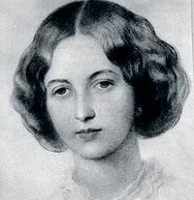
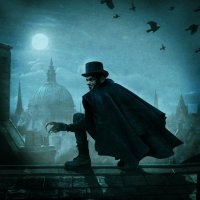
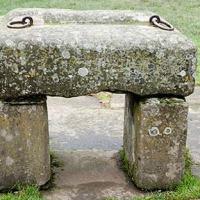
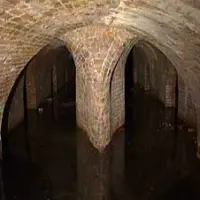
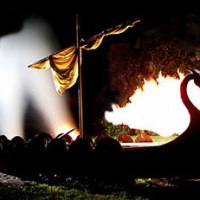
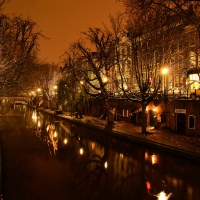

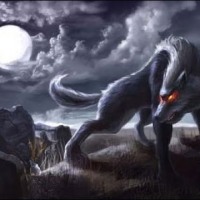
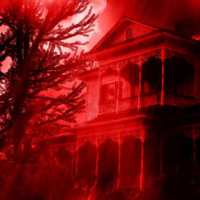
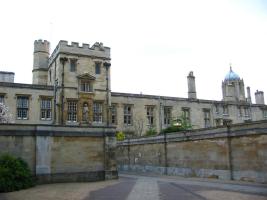


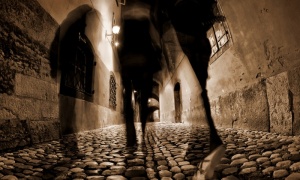


Leave a comment